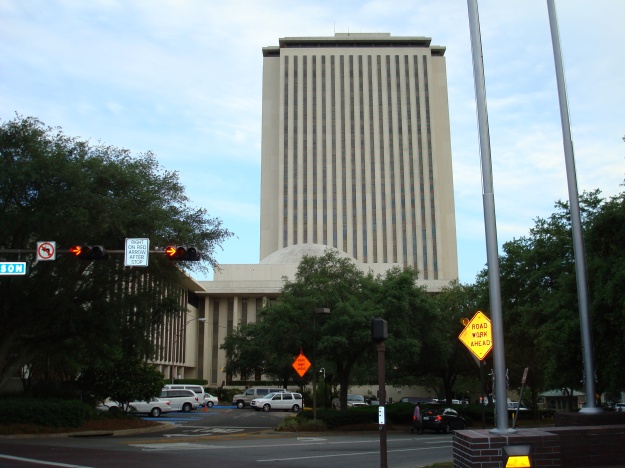
Tallahassee was selected as Florida’s capital because it was roughly equidistant from Pensacola (the administrative seat of “West Florida”) and Saint Augustine (the administrative seat of “East Florida’) when Florida was re-gifted back to the United States from Spain in 1821.
If rudely asked to name the capitals of Australia, Bolivia, Brazil, South Africa, Tanzania and Turkey on an idle Friday afternoon, some congratulations of geographic knowledge are merited for the answers Sydney, La Paz, Rio de Janeiro, Johannesburg, Dar es Salaam, and Istanbul.
Each of the above answers is incorrect, but understandably so–in the same way that some seem unaware that Juneau–not Anchorage–is the capital of Alaska, and that the Oregon Legislature meets in Eugene rather than weird Portland.
Opting for an abandoned look, Australians built their remote and spookily empty capital in Canberra.
In Bolivia, the government buildings are located in La Paz, yet the Constitution insists that the capital is in beautiful Sucre–where national independence was declared on August 6, 1825.
On April 21, 1960, at mesmerizing expense, President Juscelino Kubitschek officially moved Brazil’s capital from Rio to ultra-modern Brasilia.
Although South Africa greedily has three capitals, Johannesburg is not one of them. Wanting to spread the wealth of government jobs around the country, Pretoria hosts the Executive branch of government, the Judiciary resides in Bloemfontein, and the Legislature gets the best deal near an idyllic beach in Cape Town.
Dodoma became the capital of Tanzania in 1974 and one day they may actually move an administrative office there. The National Assembly finally arrived from Dar es Salaam in early 1996.
Apparently in an effort to be difficult, Ankara, not Istanbul, is the capital of Turkey.
Some countries opt not to have any government at their capitals.
(Not to be confused with the United States, which merely chooses not to conduct any government in its capital.)
The Netherlands’ Palace, Parliament, and Supreme Court are located in The Hague, but officially, its capital is Amsterdam.
To get around this bizarreness, it is important to know that there is a political distinction between “capital,” which is wherever the country says it is, and “seat of government,” which is wherever it actually is.
Poor Morocco could never really decide. While Rabat is the official capital, its other imperial cities include Fez, Marrakech, and Meknes. Casablanca didn’t even make it to the top four!
Tiny, but apparently self-important, Swaziland has two capitals. Their administrative capital is in Mbabane while their royal and legislative capital is in Lobamba.
Similarly, the forlorn atoll of Palau, (population 21,000) couldn’t choose between Ngerulmud and Melekeok. Meanwhile, more than two-thirds of the population resides in Koror.
In a unique approach to democratic governance, both Chile and Georgia have opted to banish their legislatures from their capitals. The capital of Chile is Santiago but its Legislature meets in Valparaiso. In Georgia, the Legislature meets in Kutaisi while the capital is officially Tbilisi.
Even the CIA World Factbook doesn’t want to recognize Sri Lanka’s attempt at moving its capital from Colombo to Sri Jayawardenepura Kotte.
Perhaps finding this whole affair of “capitals” and “seats of government” pretentious, Nauru refuses to participate at all.
It does not have a capital–though you should send diplomatic correspondence to Yaren.
That is because whether the Nauruan people like it or not, they have a “seat of government.”
